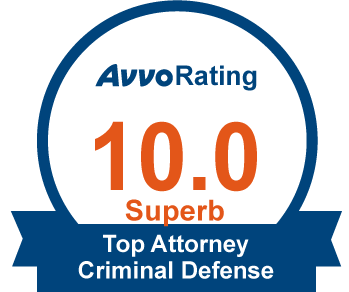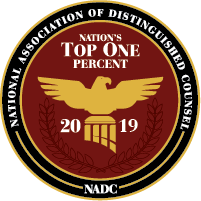The possession, transport, and/or sale of controlled substances, such as stimulants, non-narcotics, opiates, or other Schedule 1 drugs, is illegal. Depending on the type and quantity of the drugs, one could face felony penalties.
Having this offense on your criminal record will have an impact on the rest of your life. Not only could it affect future employment, but it can also have adverse effects on your future academic, housing, and travel plans.
Fortunately, there are criminal defense lawyers who can help. A knowledgeable and experienced criminal defense attorney will be familiar with the most effective legal defenses to fight these charges.
The Definition of Health & Safety Code (HS) 11379
Felony charges are most often the case when California’s Health and Safety Code section 11379 is violated. This statute makes it a crime to transport and/or sell (or attempt to sell) stimulants or non-narcotic drugs. Methamphetamine, also referred to as blow, crank, crystal meth, glass, ice, rock, or speed is one such example of an illegal stimulant.
Aside from unlawfully selling or transporting methamphetamine, you can also violate this law by attempting, offering, or actually giving it away, sharing it, or administering it to another person. Several other non-narcotic substances covered under HS 11379 are types of anabolic steroids, gamma-hydroxybutyric acid (GHB), and ketamine (special k).
Closely Related Offenses
There are health and safety codes that can sometimes be charged in addition to HS 11379. They often involve similar elements of the crime. Although they are closely related, there are slight details that differentiate them.
Vehicle Code section 23152(e), driving while under the influence of drugs (DUID);
It is a crime to operate a motor vehicle while under the influence of drugs, such as methamphetamines.
Health & Safety Code section 11352, sale or transport of controlled substances;
This law covers a different set of controlled substances than HS 11379. Under HS 11352, it is illegal to sell and/or transport illegal drugs such as cocaine, heroin, oxycodone, and other prescription pain killers.
Health & Safety Code section 11378, possessing meth for sale;
This law is closely related to HS 11379, except that it does not require that you actually sell and/or transport the controlled substance(s). Possessing meth with the intention of selling it is enough to violate HS 11378.
Health & Safety Code section 11377, personally possessing methamphetamine;
You violate HS 11377 if you are in possession of meth for your personal use.
Health & Safety Code section 11550, under the influence of a controlled substance;
Being under the influence of a controlled substance such as opiates, narcotics, or hallucinogens, like methamphetamine is a crime.
Health & Safety Code section 11383.5, possessing materials for manufacturing meth;
It is illegal to be in possession of specific kinds of chemicals that you intend to use for manufacturing methamphetamine.
Health & Safety Code section 11379.6, manufacturing a controlled substance;
This law is violated when someone creates an illicit compound, or derives, processes, produces, or manufactures an illegal controlled substance.
What does the prosecution do?
The only way the prosecution can get a conviction for HS 11379 is by first proving beyond a reasonable doubt that the facts of the crime actually took place. These facts are also referred to as the elements of the crime. They are as follows:
- The defendant engaged in at least one of the following;
- They offered, attempted, or actually did,
- Share, give-away, exchange, transport, sell, or administer,
- Crystal meth, special k, GHB, or anabolic steroids.
- The defendant knew about the nature of the drugs and they were aware of its’ presence, and
- They sold and/or transported a usable or significant amount of meth, GHB, ketamine, or certain anabolic steroids.
- A usable amount is defined as enough for someone to use, which does not mean it should be enough to get an individual stimulated. Still, it has to be something more than residue, stains, or trace amounts.
- The distance that the controlled substances were transported is not relevant.
The prosecution takes possession of Schedule 1 substances seriously and fights hard to get convictions. Unfortunately, without the help of an experienced criminal defense attorney, one may not be aware of the smaller details. Knowing what those small aspects are could make all the difference in the outcome.
Who can be charged?
It can be confusing to know if one is or is not guilty of violating HS 11379. To help clear up that confusion, the questions below illustrate who can be charged with this offense.
What if I was the middle man?
Just because you never saw or went near the meth or controlled substances, does not mean you will not be charged with the crime. Just by knowing the nature of the drugs that were present and participating either directly or indirectly in handling it is enough to face this offense.
Example:
Wayne works as a middle man for a meth lab. His job is to find a delivery guy who can transport the large batches of crystal meth from the lab to the drug dealer who is buying it.
Even though Wayne never actually came in contact with the meth, he was still involved in its’ sale and transport by finding the delivery driver and buyer for the illegal drugs. Wayne would be just as guilty for the sale and transport of meth, HS 11379, as the delivery guy who actually transported the drugs.
What if I never even touched the drugs?
As explained above, you can still face charges for HS 11379 even if you did not touch or have direct contact with the drugs.
Example:
Jon was hired to drive a package of meth from one county to the next. He knew there were illicit drugs in the package and knew they were intended for distribution. Even though Jon was used as the delivery guy and did not have anything to do with directly selling the meth, he could still face charges for violating HS 11379.
Jon never actually touched the meth, nor did he have the intention to sell it. He still, however, transported the illegal drugs and knew what the package was intended for.
But, I didn’t even know the name(s) of the drug(s).
Just because you did not know what kind of drugs were present does not mean you escape any culpability for possessing them.
Example:
Archie was going on a college trip for several weeks and entrusted his bag of party goodies to his roommate, Todd. He told Todd to sell some of them to cover the rent. Todd had no idea what kind of drugs were in the goody bag, but he knew they were of an illicit nature and he still chose to drive around town, selling them.
Todd would face charges for violating HS 11379, for the sale and transport of controlled substances. Not knowing what the names of any of them are is not a legal defense against committing the act of transporting illegal drugs that are intended for eventual sale.
Legal Defense
Getting convicted of HS 11379, the sale or transport of meth or other controlled substances carries felony consequences that will impact the rest of your life. It is a major reason to find a criminal defense lawyer who can advocate for the best possible results of your case. The following are just some of the common defenses used to combat charges for HS 11379.
Did you have knowledge of the controlled substances in your possession?
Knowing what was in your possession and knowing the nature of the substance(s) plays a part in determining whether or not you violated HS 11379. If you had no knowledge of the presence of drugs nor did you know they were illicit, then you should not be guilty of breaking this law.
Example:
Tina gave her friend a ride home from work. Shortly after dropping them off, she gets pulled over for a busted tail light. The police officer smells marijuana wafting from her backseat and investigates. He discovers some crank in small baggies and arrests her.
The backpack belonged to her co-worker, who had forgotten to grab it on their way out of the car. Tina did not know that the backpack was there, nor did she know what it contained. She would not be guilty of violating HS 11379.
Was it mere traces or simple residue?
To be convicted for violating HS 11379, you must first actually have enough meth or other controlled substance for someone to use. It does not have to be enough for an individual to get high, but it must be more than mere residuals. Not having enough drugs in your possession to sell means you would not guilty of violating this law.
Example:
Reese was pulled over for speeding. The officer noticed some questionable drug paraphernalia in the passenger seat. Upon further inspection, he found a pill bottle with tiny crystals inside. He also found a spoon with burn marks on it and what he suspected was the residue of a controlled substance.
Reese may have been in possession of meth, however, the trace amounts that were found would not be enough to constitute a charge for the sale or transport of methamphetamine.
Did you intend on selling the meth or other controlled substance?
Being in possession of illicit drugs, stimulants, and other Schedule I substances is illegal. However, to be convicted of the sale or transport of methamphetamines or similar controlled substances, one must have the intent to sell and/or transport it. If you lacked the intent to sell crystal meth, you are not guilty of HS 11379 and should not face consequences for this crime.
However, if it was meant for your personal use, you would still be guilty of possession of meth under HS 11377, the personal possession of methamphetamines.
Example:
Jessica was a recovering addict living out of a homeless shelter. She came across a bag that contained several grams of crystal meth. Arguably, it seemed to be enough that she could sell it if she wanted to. Instead, she relapsed and partook of some herself. She faced charges for being under the influence of drugs and for the intent to sell what she had.
She expected these charges, having been an addict. However, she did not intend on selling the drugs she had found, so she should not be guilty of the sale or transport of meth. Unfortunately, she would still face charges for HS 11377, personal possession of a controlled substance and HS 11550, being under the influence of drugs.
Was it a case of entrapment?
An example of this kind of case would be if the defendant was coerced, persuaded, threatened, blackmailed, or forced into violating HS 11379.
Example:
Taylor was friends with an ex-con in town. Detective Mike did not like the ex-con and decided to use Taylor against him. Under threat of arrest, the detective gave Taylor a small baggie of crystal meth, ordering him to attempt to sell it to the ex-con. Detective Mike was intent on bringing them both in after the sale was made.
Scared of getting arrested, Taylor did what the detective asked. The ex-con did not buy any, but Detective Mike still wanted to make a collar, so he arrested Taylor anyway. In this case, the detective was guilty of abuse of power and intimidating Taylor into committing an illegal act. This type of situation is called entrapment and under these circumstances, Taylor would not be guilty of HS 11379.
Penalties for HS 11379
If convicted of violating Health & Safety Code section 11379, you face felony consequences.
Felony;
2, 3, or 4 years in county jail, and/or
Fines of up to ten thousand dollars.
Enhanced Penalties for HS 11379
The volume of drugs, the location, the people involved, and the distance traveled will play a part in the overall punishment.
Situations where you violated HS 11379 while within one thousand feet of a detox center, drug treatment facility, or homeless shelter, you face;
One year of jail time to be added to your sentence.
If you crossed 2 or more county lines to sell the meth being transported, you face;
3, 6, or 9 years in county jail.
Using a minor (someone under the age of 18) to assist you in violating HS 11379, you face;
3, 6, or 9 years in state prison.
If the meth or controlled substances you were transporting was greater than one kilogram, you face;
3 to 15 years in state prison.
Also, a conviction for HS 11379 will have an impact on one’s immigration status. It could result in deportation and future attempts of gaining entry or legal status in the United States.
Furthermore, it’s important to note, being convicted of this crime or any closely related crime will result in exclusion from California’s drug diversion program. This program allows the convicted party the opportunity to enter the program instead of serving jail time. However, there are only a few offenses that can qualify for this program.
An experienced legal defense attorney could help fight for a lesser sentence. It could result in having a chance to be eligible for the drug diversion program.
Penalties for Related Offenses
VC 23152(e), driving while under the influence of drugs (DUID);
Misdemeanor;
Up to eighteen hundred dollars in fines,
DUI probation for 3 to 5 years,
Suspended drivers’ license,
California DUI school, and
Potential jail time.
Felony;
3 or 4 years in county jail, and/or
Potential fines of one thousand to five thousand dollars.
HS 11352, sale or transport of controlled substances;
Felony;
3 to 9 years in county jail, and/or
Up to twenty thousand dollars in fines.
HS 11378, possessing meth for sale;
Felony;
16 months, 2 or 3 years in county jail, and/or
Fines of up to ten thousand dollars.
HS 11377, personally possessing methamphetamine;
Misdemeanor;
A potential one-year county jail sentence, and/or
Fines of up to one thousand dollars.
HS 11550, under the influence of a controlled substance;
Misdemeanor;
Informal probation for up to five years,
Drug counseling,
Up to one-year in county jail, and
Community service.
HS 11383.5, possessing materials for manufacturing meth;
Felony;
Formal probation,
Fines of up to ten thousand dollars, and/or
2, 4, or 6 years in county jail.
HS 11379.6, manufacturing a controlled substance;
Felony;
Fines of up to fifty thousand dollars, and/or
3, 5, or 7 years in county jail.
Who Can Help
Drug trafficking of any kind is met with strict punishments by California’s standards. Many of these offenses result in felony charges and should not be taken lightly. If you are located in the greater San Diego area, Los Angeles, Orange County, or the state of Illinois, consider the Law Offices of Anna R. Yum.
Attorney Yum is a highly-recommended criminal defense attorney who understands what is needed to fight allegations like the sale or transport of controlled substances.
You do not have to face this alone, simply contact us online or call us at 619-233-4433 for a free consultation.











